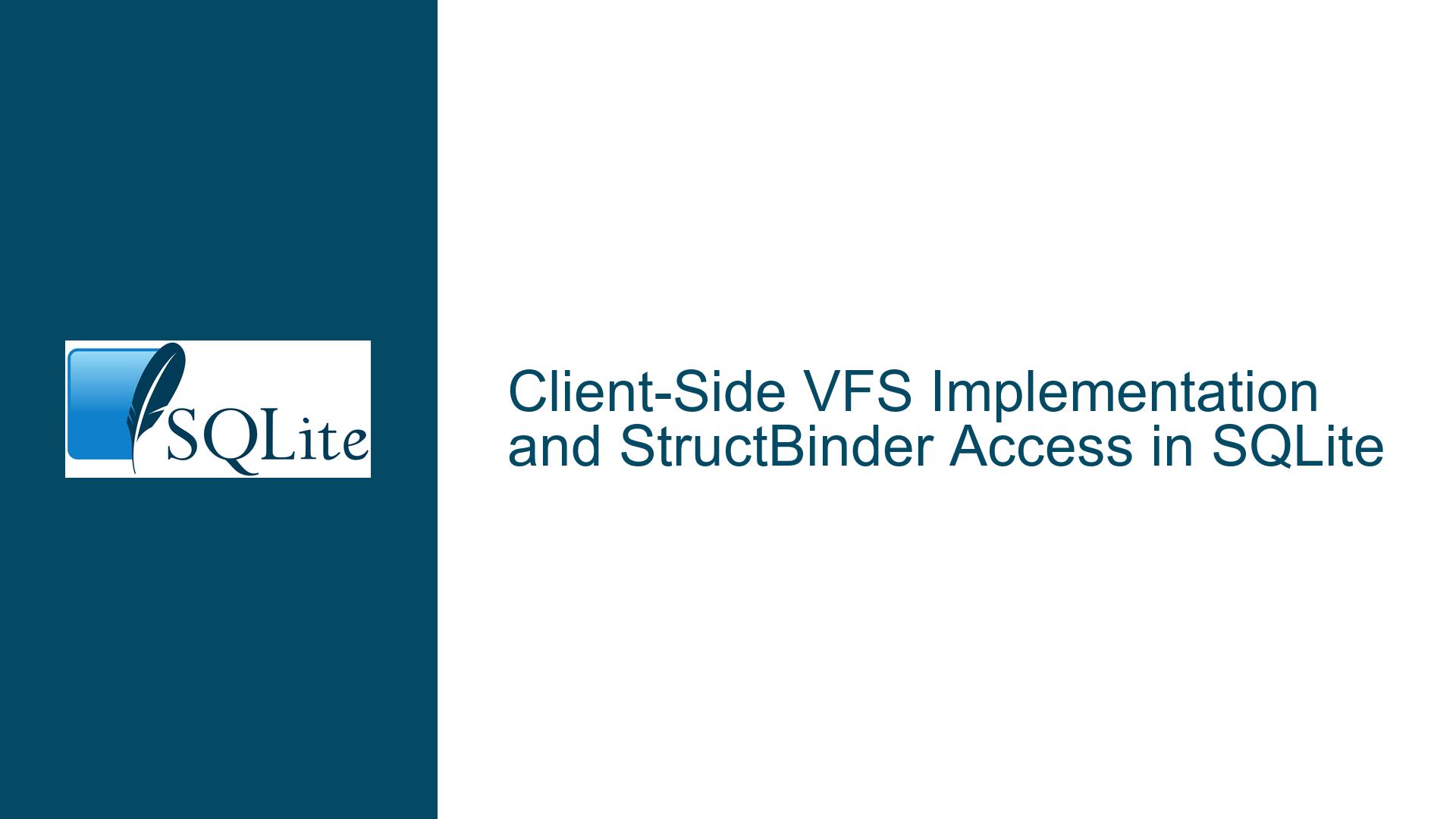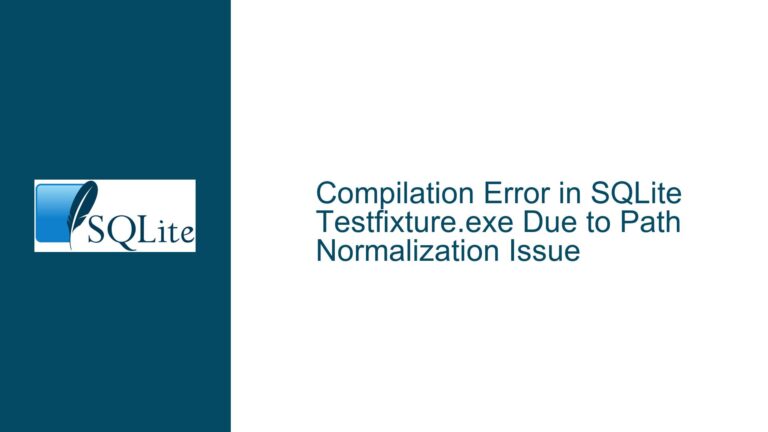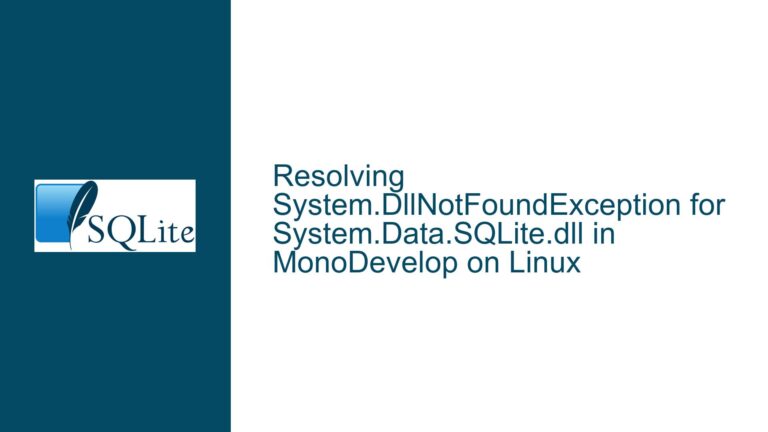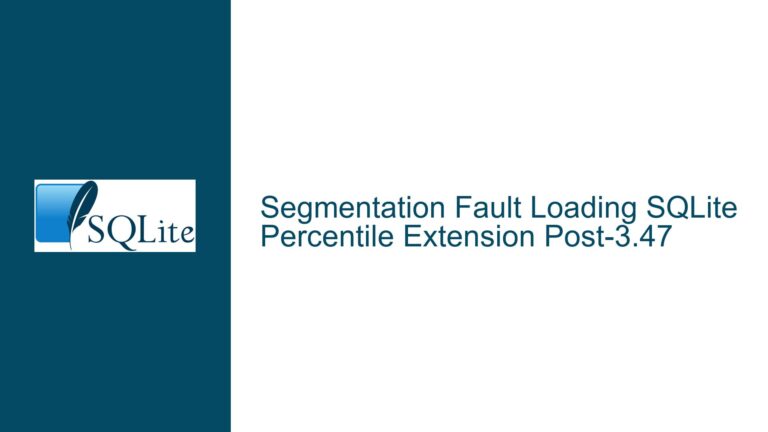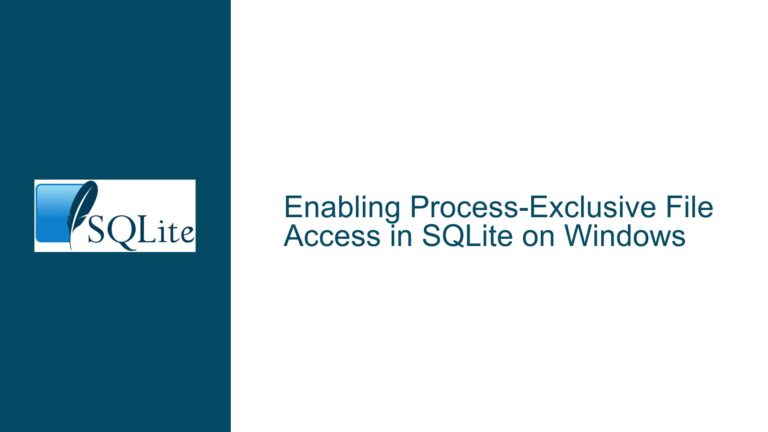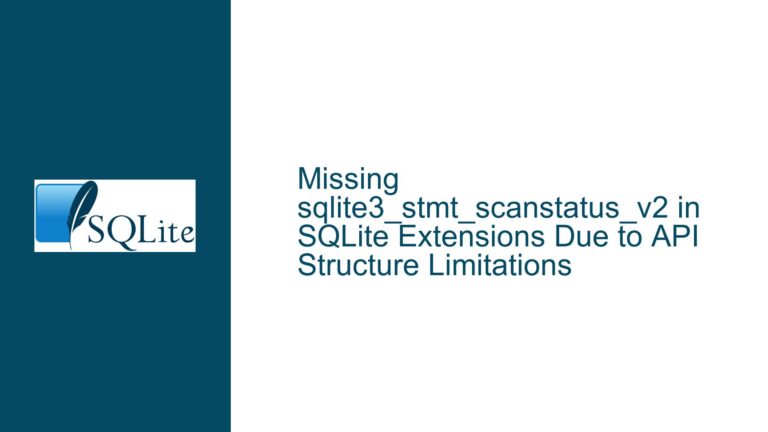Client-Side VFS Implementation and StructBinder Access in SQLite
Issue Overview: StructBinder Access in Client-Side VFS Implementations
The core issue revolves around the implementation of a client-side Virtual File System (VFS) in SQLite, specifically when using the sqlite3.vfs.installVfs method. The problem arises due to the reliance on an internal SQLite component called StructBinder, which is used to bridge JavaScript and C structures. This component is critical for defining and manipulating C structures in JavaScript, particularly when implementing custom VFS handlers. However, StructBinder is intentionally removed from the public API after the bootstrap phase of SQLite initialization, as it is considered an internal implementation detail.
The primary challenge is that the installVfs method requires access to StructBinder to define the I/O methods structure, which is inherently a C structure. Without access to StructBinder, developers cannot properly register their custom VFS implementations. This limitation has led to exceptions when attempting to access sqlite3.StructBinder.StructType after the bootstrap phase, as the StructBinder object is deleted from the sqlite3 namespace.
The discussion highlights a tension between the need for flexibility in client-side VFS implementations and the desire to maintain a clean, stable public API. While StructBinder is essential for certain advanced use cases, exposing it publicly could lead to long-term maintenance challenges, as it would become a de facto part of the API, subject to backward compatibility constraints.
Possible Causes: Why StructBinder Access is Restricted
The restriction on StructBinder access stems from several design and maintenance considerations within the SQLite project. Understanding these causes is crucial for appreciating the complexity of the issue and the rationale behind the current implementation.
Internal Implementation Detail:
StructBinderis designed as an internal tool to facilitate the interaction between JavaScript and C structures within SQLite’s WebAssembly (Wasm) build. It is not intended to be part of the public API, as its primary purpose is to support SQLite’s internal operations. ExposingStructBinderto client-side code would blur the line between internal and public APIs, potentially leading to misuse or unintended dependencies.API Stability and Maintenance Burden: Once a component is exposed as part of the public API, it becomes subject to backward compatibility requirements. Any changes to
StructBinderwould need to be carefully managed to avoid breaking existing client code. Given thatStructBinderis an internal utility, its implementation may evolve over time, and exposing it publicly would impose a significant maintenance burden on the SQLite development team.Security and Encapsulation: By keeping
StructBinderinternal, SQLite maintains better control over its codebase and reduces the risk of unintended side effects caused by external modifications. ExposingStructBindercould lead to security vulnerabilities or instability if client code interacts with it in unexpected ways.Alternative Approaches: The SQLite team has indicated that client-side VFS implementations do not necessarily require
StructBinder. Other projects have successfully implemented custom VFS handlers without relying on this internal component. However, the exact mechanisms for doing so are not well-documented, leading to confusion and frustration among developers attempting similar implementations.Symbol-Based Access Proposal: One suggested workaround involves using JavaScript
Symbolobjects to provide controlled access toStructBinder. This approach would allow internal code to accessStructBinderwhile making it less visible to client-side code. However, this solution has limitations, as theSymbolwould still need to be publicly accessible to some extent, potentially undermining the goal of encapsulation.
Troubleshooting Steps, Solutions & Fixes: Resolving StructBinder Access Issues
Resolving the issue of StructBinder access in client-side VFS implementations requires a combination of immediate workarounds and long-term solutions. Below, we explore the steps developers can take to address this problem, along with potential fixes and best practices.
Immediate Workarounds
Expose StructBinder Manually: As a temporary solution, developers can manually expose
StructBinderby modifying the SQLite initialization code. This involves removing thedelete sqlite3.StructBinderstatement or adding a reference toStructBinderbefore it is deleted. While this approach works, it is not recommended for production use, as it relies on internal implementation details that may change in future versions.Use Pre-Release Snapshots: The SQLite team has addressed this issue in a recent pre-release snapshot, which provides a more robust solution for accessing
StructBinder. Developers can download and use this snapshot to avoid the need for manual modifications. This approach is preferable to manual workarounds, as it leverages an officially supported fix.Symbol-Based Access: If manual modifications are unavoidable, developers can implement a
Symbol-based access mechanism to provide controlled access toStructBinder. This involves defining aSymbolproperty on thesqlite3.vfsobject and using it to store and retrieveStructBinder. While this approach improves encapsulation, it still requires careful management to avoid unintended exposure.
Long-Term Solutions
Official API Support: The SQLite team is considering formalizing support for client-side VFS implementations, potentially by exposing a limited subset of
StructBinderfunctionality or providing alternative APIs for defining C structures. This would provide a stable, documented interface for developers while minimizing the maintenance burden.Documentation and Examples: Improved documentation and example code would help developers understand how to implement custom VFS handlers without relying on
StructBinder. By providing clear guidance and best practices, the SQLite team can reduce the need for internal workarounds and promote more robust implementations.Community Contributions: Developers can contribute to the SQLite project by sharing their experiences and solutions for implementing client-side VFS handlers. This collaborative approach can help identify common pain points and drive the development of new features or APIs to address them.
Custom Builds: For advanced use cases, developers can create custom builds of SQLite that include their own C struct types and
StructBinderimplementations. This approach provides maximum flexibility but requires significant expertise and effort.
Best Practices
Avoid Reliance on Internal APIs: Whenever possible, developers should avoid relying on internal APIs like
StructBinder. Instead, they should use officially supported methods and APIs to achieve their goals. This reduces the risk of compatibility issues and ensures long-term stability.Stay Updated: Developers should regularly update their SQLite builds to take advantage of the latest fixes and improvements. This is particularly important when using pre-release snapshots or experimental features.
Engage with the Community: Participating in the SQLite community, whether through forums, mailing lists, or GitHub, can provide valuable insights and support. Engaging with other developers and the SQLite team can help resolve issues more quickly and contribute to the overall improvement of the project.
Test Thoroughly: When implementing custom VFS handlers or other advanced features, thorough testing is essential. This includes testing for compatibility across different versions of SQLite and ensuring that the implementation behaves as expected under various conditions.
By following these troubleshooting steps, solutions, and best practices, developers can effectively address the challenges associated with StructBinder access in client-side VFS implementations. While the current limitations present some hurdles, the ongoing efforts by the SQLite team and the broader community promise to deliver more robust and flexible solutions in the future.
